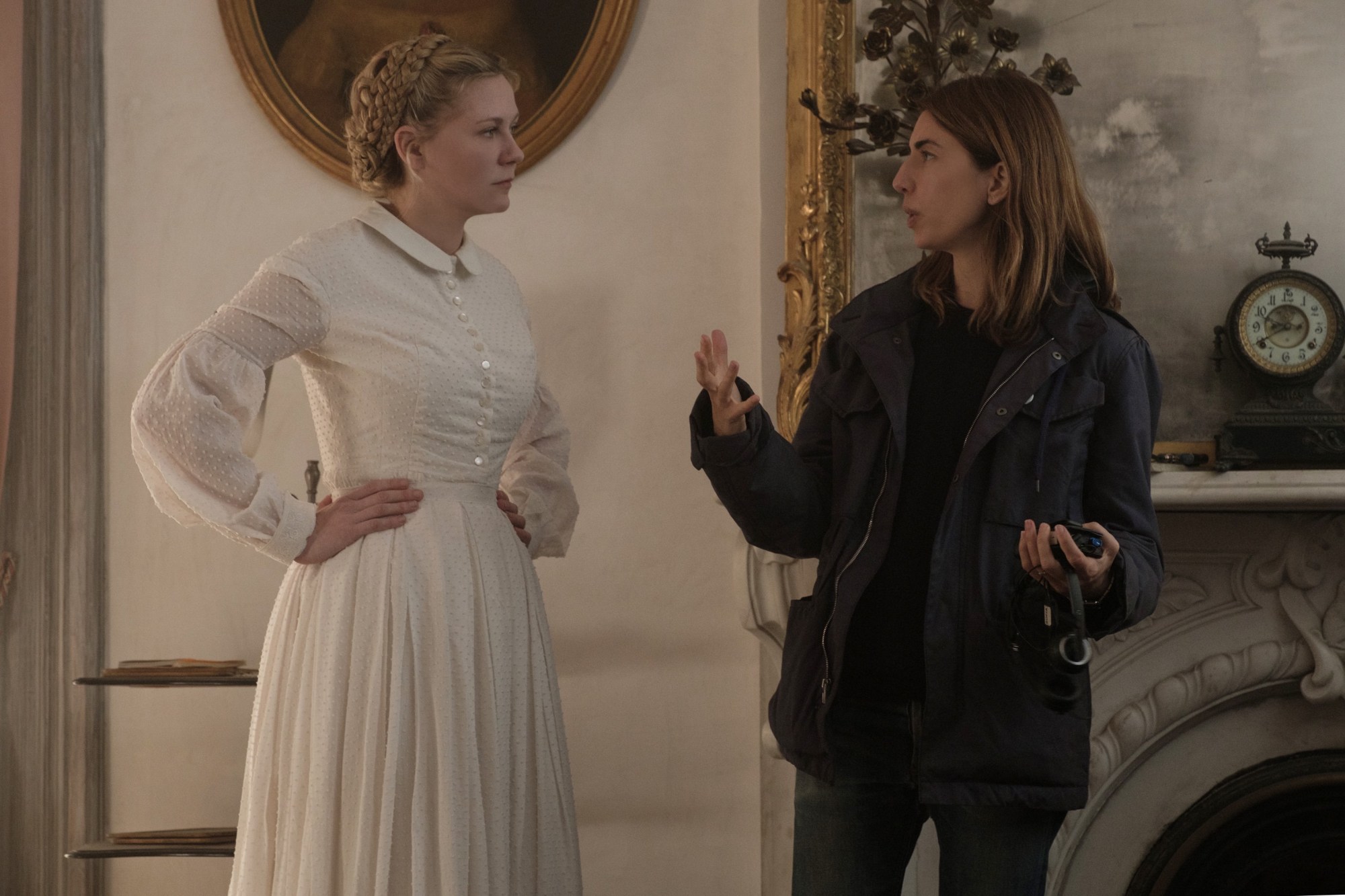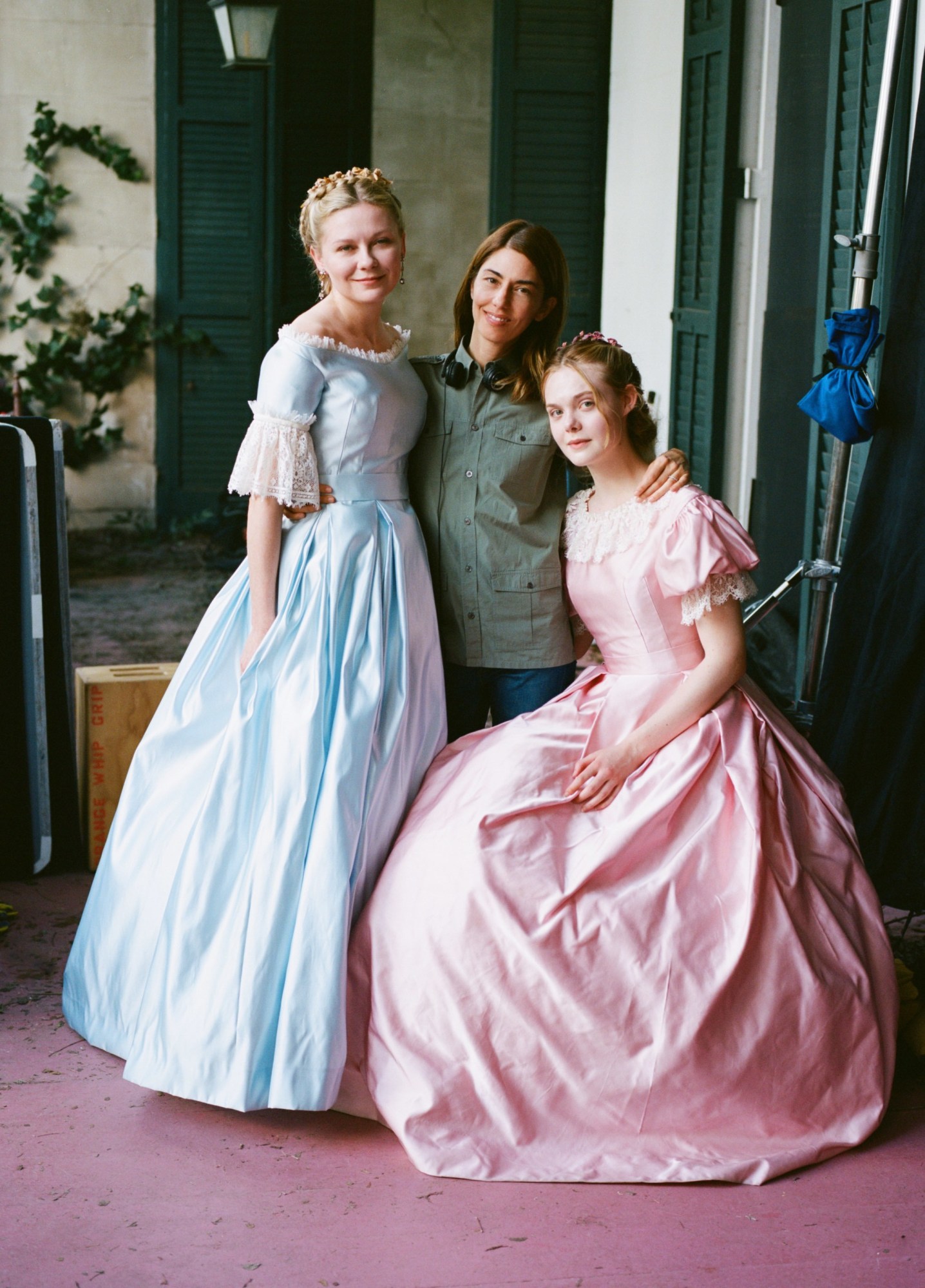“I always love the sisterhood of women,” says Sofia Coppola. She’s talking about The Beguiled, her strange and gorgeous new historical thriller, but she could be talking about any of her six features. And in fact, she sees this Southern Gothic genre film as a continuation of themes she starting exploring in her first movie, The Virgin Suicides. If you’re a Virgin Suicides fan (and who isn’t?), you’ll get that right away, with the blondes in long lacy vanilla dresses and languorous sunny afternoons spent indoors. Rewind 100 years and swap out a record player for some needlepoint, and the two films are spiritual twins.
“I didn’t have any sisters growing up, so my girlfriends are like that to me, having that solidarity,” she continues. And what better place to find solidarity than a movie set? Shooting at the New Orleans plantation where Beyoncé shot much of Lemonade, Sofia brought together one of those casts that feels like an “ideal dinner party” parlor game: Nicole Kidman, Kirsten Dunst, Elle Fanning, newcomers Angourie Rice, Addison Riecke, and Oona Lawrence, who play the teachers and students at a decimated Southern girls’ school at the end of the Civil War. Oh, and there’s a guy: early aughts hunk Colin Farrell as the wounded Yankee soldier that takes refuge with the ladies. (Coppola is particularly good at resurrecting men that need a lift — think of Stephen Dorff in Somewhere.)
The Beguiled is pleasingly genre-ish, less trendy somehow than the rest of Coppola’s oeuvre. There’s a gorey close-up of a skin suture and some pretty convincing sex. It feels like the kind of movie that will be resurrected as a cult obsession by art school kids 50 years from now, who will debate it in the virtual reality classrooms of the future. Originally a novel called The Painted Devil, the story became a 1971 Don Siegel film starring Clint Eastwood. On the recommendation of a friend, Sofia watched the movie, although she was initially resistant to doing a remake. But, she says, “it stayed in my mind and I kept thinking about it.” She liked the idea of re-telling the story from the women’s point of view.

Which is how a forgotten quasi-horror film that plays on late-night cable got a new life as a feminist fable, one that became even more relevant as it filmed during November 2017, while a real-life thriller played out on cable news. As Sofia says now, “During that whole election, there was so much being talked about the power between men and women.” Much like the film itself: “What I loved about [the story] so much is the dynamics between women and power shifts between men and women, which I think is on our minds these days.”
The day after the election on a set with lots of women, was, she says, “a big downer. Everyone was sad.” They worked through it: “We were filming and you know, just trying to keep going.” I have to wonder whether the American political scene affected the performances at all. The burgeoning sentiments behind the Women’s March do feel present in Nicole Kidman’s lioness of a headmistress, and Kirsten Dunst’s restrained yet raging schoolteacher.
What’s the last film you saw that accurately portrays the viewpoints of women from puberty to middle age? If you’re blanking it’s for good reason, and might have something to do with who writes the films that actually get produced. Sofia has written every one of her own scripts. “I liked writing each of those characters because I’ve been the age of each one of them,” she says of the girls and women. “You know, I can relate to being 18, or being Edwina’s age, but I loved how Nicole really brought a lot of being protective and maternal with the younger girls when we were on set in the character, because that’s what I was thinking.”
It’s impossible to separate Sofia’s work in the film industry from her gender. (Although I wish it were a non-issue.) When she won the hallowed Best Director Award at Cannes this year, she found it hard to believe that she was only the second woman to ever have gotten it. (The other was former silent film actress Yuliya Solntseva in 1961). “I’m just excited that I got to make this movie, to put this out there, which is a female point of view,” she says. “I’m happy Wonder Woman‘s a hit. I’d love to see more and more and more of it so that the other half of the population can be represented. I love seeing movies from different points of view, not just one.” She admires the work of female directors like Jane Campion, Tamara Jenkins, and Andrea Arnold.

The Cannes award solidifies Sofia as a Director with a capital “D.” Not only a female director, not only a fashion-savvy director, not only the daughter of a director. But she is still all of those things. On a recent episode of the WTF podcast, she told Marc Maron about using her father Francis Ford Coppola’s method of rehearsing actors: having them prepare a meal together in character. “When you have food it becomes sensory,” she explains.
She also subjected her millennial actresses to Antebellum Boot Camp, to make those long, stifling needlepoint afternoons more believable. They took sewing classes and etiquette classes, all while wearing the corsets and hoop skirts that would be part of what Sofia calls “this gauzy, feminine world.” The director says, “We tried to immerse ourselves as much as we could in what it was like to live at that time.”
Sofia and her mostly female art direction team looked at lots of portraits from the time to create the natural, realistic look of the film. Notably absent are the pop, anachronistic details from Marie Antoinette. But she’s still Sofia Coppola, the one-time fashion designer and photographer who trained under Paul Jasmin, so she also used William Eggleston’s “faded” palette to inform a world where clothing “had been washed a million times.”
The costumes and set were historically accurate, but the sensibility draws straight from the 60s and 70s heyday of horror. Sofia loved horror films growing up, slightly campy ones like The Fearless Vampire Killers, “any movie with girls in long white nightgowns, candelabras.” And the unlikeliness of the genre was not lost on her: “It was really fun and challenging to how I would kind of approach the Southern Gothic genre, but still in my own style.”
The style serves a purpose here, which is entertainment in its purest state. Sofia talks about the pacing of a thriller like this: “It was more plot-driven, trying to sustain the tension, which I thought about when I was writing the script, but then really in the editing.” That attention to the velocity of the movie leaves us in murky moral territory. Is the audience meant to side with the alternately flirtatious, defiant, and villainous women? Or the seductive and volatile mercenary soldier? And what to make of the fact that Coppola avoided the racial politics of the Civil War altogether?
Sofia seems receptive to the idea of moral ambivalence. Who’s the protagonist? “It kind of shifts around so, you know, I hope that by the end you’re on the side of this group of women together,” she says. “I feel like Kirsten’s character is kind of the heart of the story, because she’s the one that’s the most vulnerable or you can connect to.”
Kirsten’s romantic schoolteacher Edwina is the one that falls hardest for Colin Farrell’s soldier, making this a literal bodice-ripper, complete with buttons falling to the floor. Of one very un-Coppola sex scene, Sofia says, “I always get sort of embarrassed or shy about shooting that kind of a scene, so Kirsten and I talked about, We’re gonna go for it, trying to have it feel real and intense. So much of the film is all this sexual tension burning underneath.”
There’s also that sponge bath moment, where Nicole Kidman gently cleans the soldier’s loins. When I watched it in the theater, the audience erupted into nervous giggles. “I was sitting next to them on an apple box and asking her to like, sort of clean his inner thigh,” she remembers. “So I tried to push it so there’s nothing too prudish about it.”
The scene, like the rest of The Beguiled, is totally unexpected. It’s not cool or stylish, reductive words often used to describe Sofia Coppola’s work. It’s funny, and real, and most importantly, it drives the plot forward.
Credits
Text Rory Satran
Photography top image: Andrew Durham / CPi Syndication
Photography two lower images: Ben Rothstein / Focus Features
